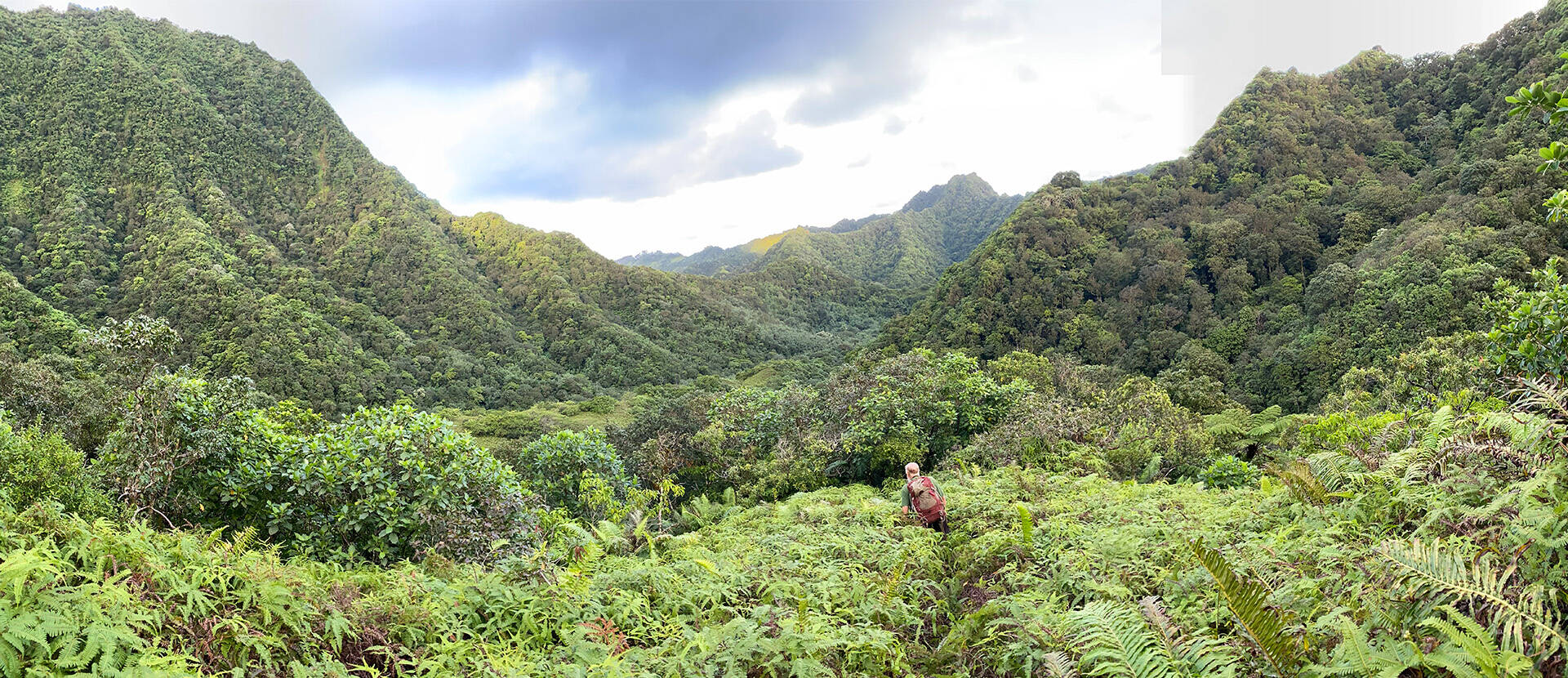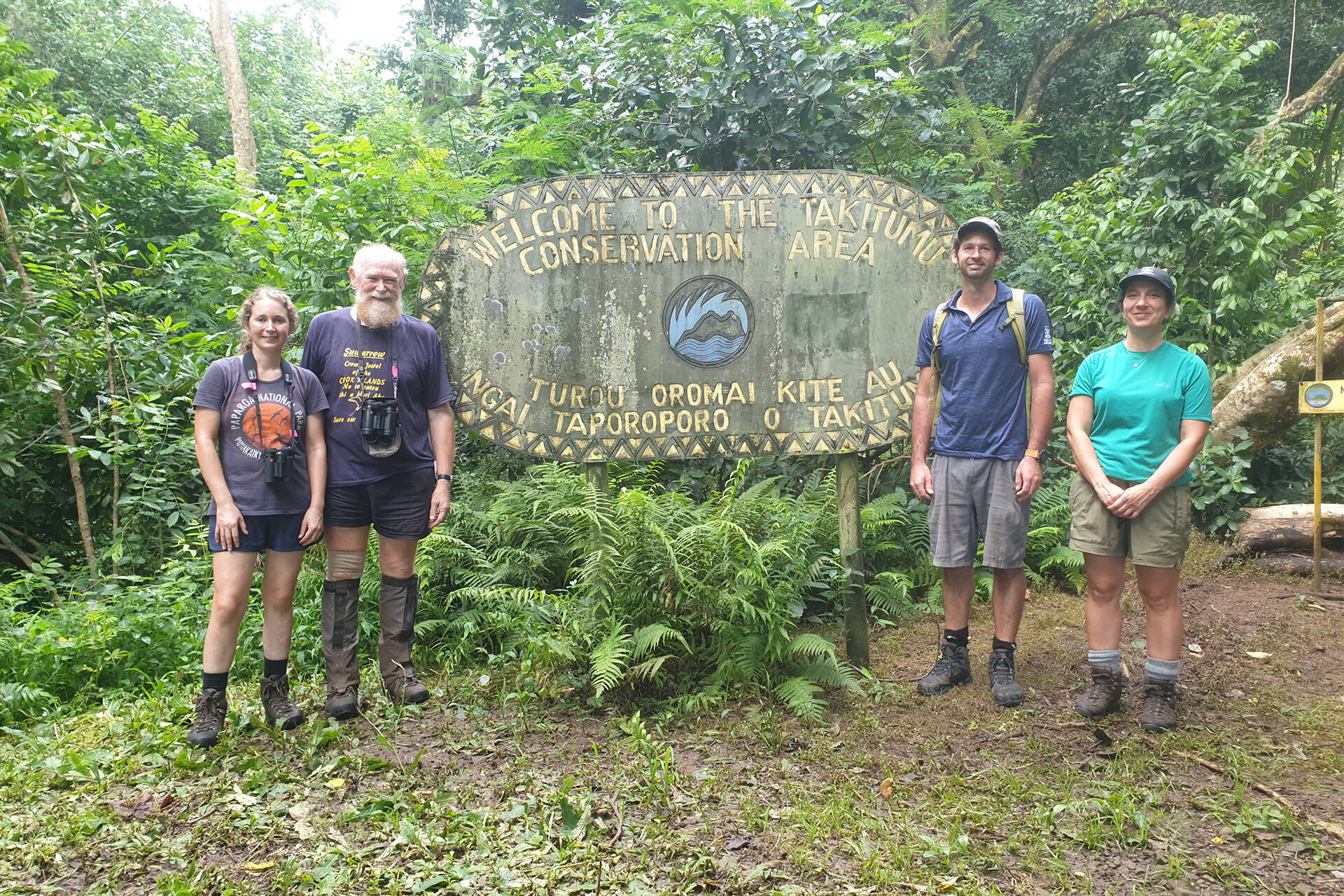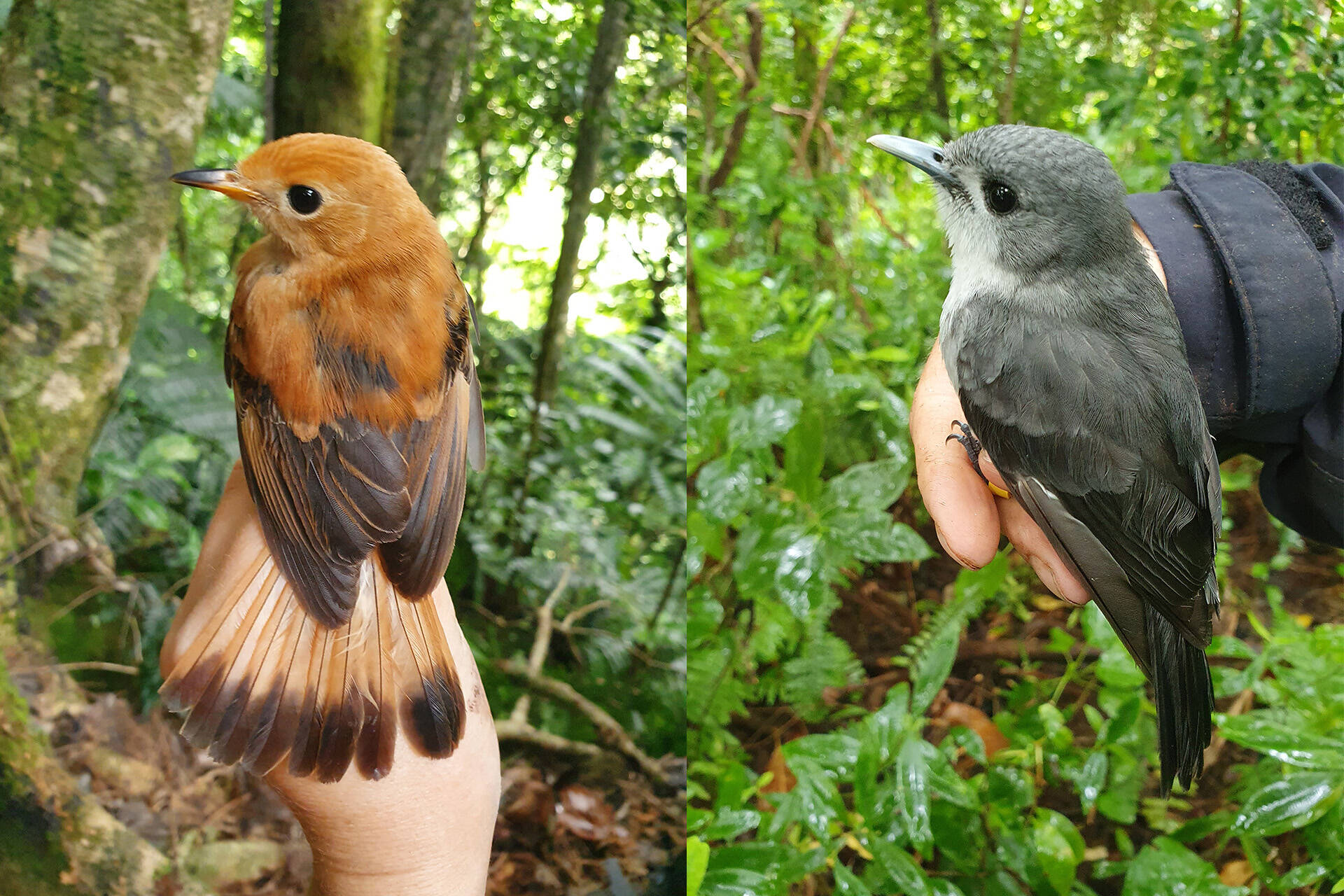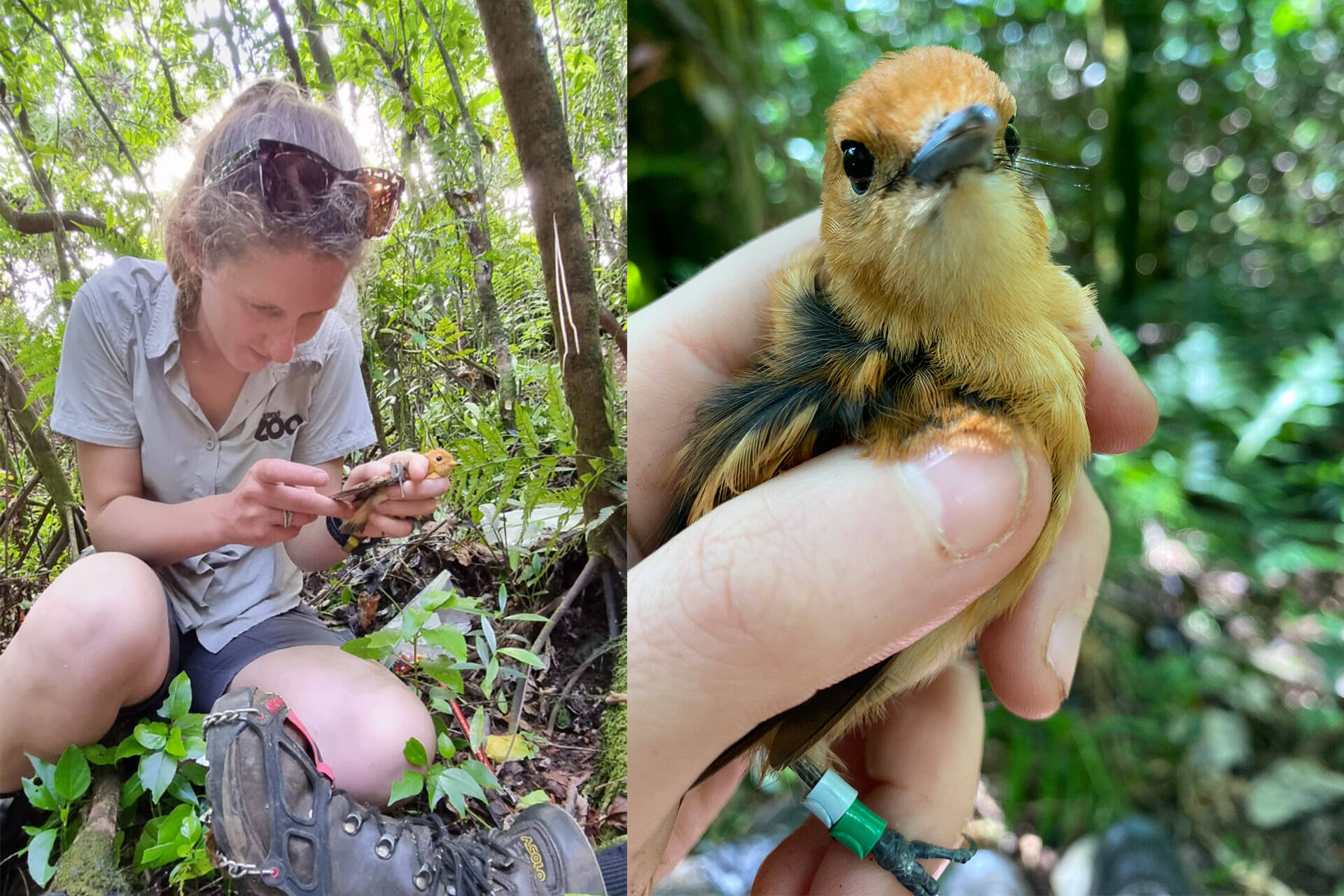Our keepers lend their expertise in projects much farther afield in the wider Pacific region, to assist with recovery efforts for threatened species. One such species is the kākerōri or Rarotongan monarch which is endemic to Rarotonga.
Earlier this year, bird keeper Devon journeyed to Rarotonga to help with banding (placing a small coloured band on a birds leg) of wild monarchs for future identification. The team, led by DOC scientist Hugh Robertson, carry out this work every year. This regular banding work ensures that when the kākerōri census rolls around every three years, it is possible to identify individual birds and make an accurate population estimate.
As you’ll see in these images, the juvenile birds have bright orange plumage. These feathers will eventually turn grey as they mature.









